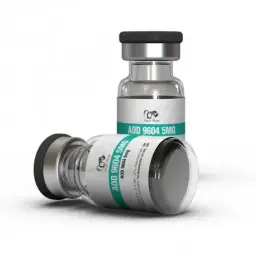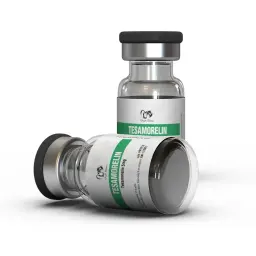Weight Management & Metabolism (27 Offers)
Dragon Pharma Weight Loss Peptides offer an advanced approach to metabolic research. This category includes potent compounds like Semaglutide and Tirzepatide, which are studied for their ability to regulate appetite, improve glucose metabolism, and support significant fat loss through targeted hormonal pathways.

Drug Class: Amylin Analogue, Appetite Suppressant
Composition: Cagrilintide Acetate
Dosage: 10 mg/vial
Form: Lyophilized Powder
Unit: 2 mL Multidose Vial
Form: Lyophilized Powder
Brand: Dragon Pharma
Laboratory Test: View Lab Report
For Subcutaneous Injection

Drug Class: Dual GLP-1 and Glucagon Receptor Agonist
Composition: Mazdutide (IBI362)
Dosage: 10 mg/vial
Form: Lyophilized Powder
Unit: 2 mL Vial
Brand: Dragon Pharma
Laboratory Test: View Lab Report
For Injectable Use After Reconstitution

Drug Class: Triple GIP, GLP-1 & Glucagon Receptor Agonist
Composition: Retatrutide (LY3437943)
Dosage: 10 mg/vial
Form: Lyophilized Powder
Unit: 2 mL Vial
Brand: Dragon Pharma
Laboratory Test: View Lab Report
For Injectable Use After Reconstitution

Drug Class: Glucagon-Like Peptide-1 (GLP-1) Receptor Agonist
Composition: Semaglutide
Dosage: 5 mg/vial
Form: Lyophilized Powder
Unit: 2 mL Vial
Brand: Dragon Pharma
Laboratory Test: View Lab Report
For Subcutaneous Injection After Reconstitution

Drug Class: Dual GLP-1/Glucagon Receptor Agonist
Composition: Survodutide
Dosage: 10 mg/vial
Form: Lyophilized Powder
Unit: 2 mL Vial
Brand: Dragon Pharma
Laboratory Test: View Lab Report
For Subcutaneous Injection After Reconstitution

Drug Class: Dual GIP and GLP-1 Receptor Agonist
Composition: Tirzepatide
Dosage: 10 mg/vial
Form: Lyophilized Powder
Unit: 2 mL Vial
Brand: Dragon Pharma
Laboratory Test: View Lab Report
For Subcutaneous Injection
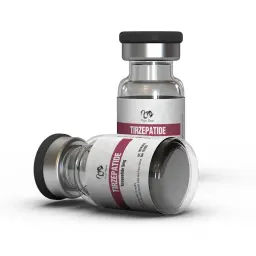
Drug Class: Dual GIP and GLP-1 Receptor Agonist
Composition: Tirzepatide
Dosage: 5 mg/vial
Form: Lyophilized Powder
Unit: 2 mL Vial
Brand: Dragon Pharma
Laboratory Test: View Lab Report
For Subcutaneous Injection
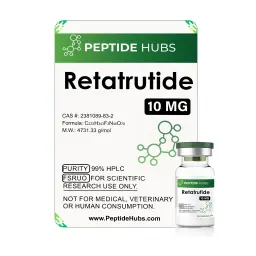
Drug Class: GIP/GLP-1/Glucagon Triple Receptor Agonist
Composition: Retatrutide
Dosage: 10 mg/vial
Form: Lyophilized Powder
Unit: 2 mL Vial
Brand: Peptide Hubs
Laboratory Test: View Lab Report
For Subcutaneous Injection
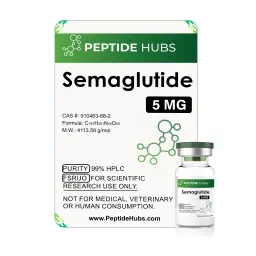
Drug Class: GLP-1 Receptor Agonist
Composition: Semaglutide
Dosage: 5 mg/vial
Form: Lyophilized Powder
Unit: 2 mL Vial
Brand: Peptide Hubs
Laboratory Test: View Lab Report
For Subcutaneous Injection
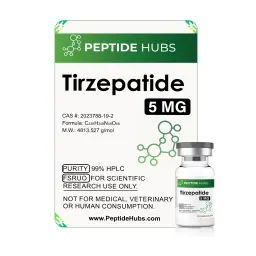
Drug Class: GIP/GLP-1 Dual Receptor Agonist
Composition: Tirzepatide
Dosage: 5 mg/vial
Form: Lyophilized Powder
Unit: 2 mL Vial
Brand: Peptide Hubs
Laboratory Test: View Lab Report
For Subcutaneous Injection

Drug Class: Dual GLP-1/Amylin Receptor Agonist
Composition: Cagrilintide Acetate
Dosage: 10 mg/vial
Form: Lyophilized Powder
Unit: 2 mL Vial
Brand: Stealth Labs
Laboratory Test: View Lab Report
For Research Purposes
Shipped Without Label!

Drug Class: Dual GLP-1/Glucagon Receptor Agonist
Composition: Mazdutide
Dosage: 10 mg/vial
Form: Lyophilized Powder
Unit: 2 mL Vial
Brand: Stealth Labs
Laboratory Test: View Lab Report
For Subcutaneous Injection
Shipped Without Label!
Dragon Pharma Weight Loss Peptides: Researching Metabolic Pathways
The science of weight management has evolved significantly with the discovery of peptides that directly influence metabolic function and appetite regulation. Dragon Pharma provides a selection of research compounds, including incretin mimetics and metabolic modulators, that are central to contemporary studies on body composition. These peptides work by mimicking natural hormones involved in satiety, glucose metabolism, and fat storage, offering researchers powerful tools for studying obesity and metabolic health.
Understanding the Mechanisms of Metabolic Peptides
Weight loss peptides primarily function through several key biological pathways. Many, like Semaglutide and Tirzepatide, are incretin mimetics that activate GLP-1 receptors, slowing gastric emptying and promoting feelings of fullness. Others, like Cagrilintide, work through amylin receptors to reduce food intake. AOD 9604 operates through a different mechanism by modifying the way the body metabolizes fat. Understanding these distinct pathways is crucial for designing effective research protocols.
Key Compounds and Their Research Profiles
The Dragon Pharma catalog features peptides with varying mechanisms and research applications for metabolic studies.
- Semaglutide: A GLP-1 receptor agonist studied for its potent effects on appetite suppression and glycemic control.
- Tirzepatide: A dual GIP and GLP-1 receptor agonist researched for its synergistic effects on weight loss and glucose management.
- Retatrutide: A triple agonist targeting GIP, GLP-1, and glucagon receptors, representing a novel approach in metabolic research.
- Cagrilintide: A long-acting amylin analogue studied for its appetite-suppressing effects through a different pathway than GLP-1 agonists.
- AOD 9604: A modified fragment of growth hormone researched for its potential to stimulate fat metabolism without affecting blood sugar or growth.
Research Considerations for Metabolic Protocols
When studying these compounds, researchers must consider several important factors. The half-life varies significantly between peptides, influencing dosing frequency from daily to weekly administrations. Titration protocols are often essential, as starting with lower doses and gradually increasing can help manage initial side effects while allowing the body to adapt. Understanding these compounds' effects on pancreatic function and gastrointestinal motility is also crucial for comprehensive metabolic research.
Safety and Monitoring in Metabolic Research
Working with potent metabolic modulators requires careful attention to research parameters. These compounds can significantly impact digestive function, blood glucose levels, and electrolyte balance. Researchers should implement appropriate monitoring measures and maintain awareness of potential side effects. As with any research compound, starting with conservative dosages and having a clear protocol for managing adverse effects is essential for responsible scientific inquiry.



